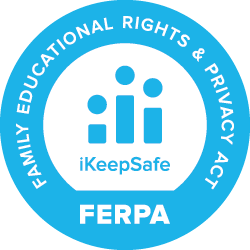DEV VERS - Bag It!
The average American uses more than 300 plastic bags every year. This activity challenges you to monitor your plastic bag usage, and explore where plastic bags come from and the energy it takes to make them. Finally, you create your own messaging to encourage your communities to re-use and recycle plastic bags in an environmentally friendly way.
Resource Title:
Bag It!
Description:
The average American uses more than 300 plastic bags every year. This activity challenges you to monitor your plastic bag usage, and explore where plastic bags come from and the energy it takes to make them. Finally, you create your own messaging to encourage your communities to re-use and recycle plastic bags in an environmentally friendly way.
Target Grade Level:
Grades K-4
Discipline or Course (Audience):
Science
Time Frame:
Two 90-minute class periods without extensions
Suggested Grouping:
Individual
Key Vocabulary:
Fossil fuel
Educator Prep:
Preparation Directions:
- Gather materials.
- Print student activity sheet (one for each student).
- Using your newsletter or electronic communications, ask parents to help students keep track of the number of plastic bags used over the course of the week.
- Generate a map of your community. You can go directly to Web Link - Google Maps for simple maps and type in your city or town. By zooming in or out, you can obtain the desired level of detail and print (Alt + PrtScr will print an image of the window you have open). You can also obtain maps at the town hall, library, or AAA.
- Collect various HDPE plastic bags from local stores that kids will recognize.
- Review the Additional Resources to Explore list at the end of the activity to use as a supplement to students understanding as needed.
Optional: For the extension activity, collect crochet hooks.
Teacher Directions for Part 1: Count Your Plastic Bags
Conduct the activity with students. Students should record their family’s plastic bag usage every day for a week. At the end of each day, or at the end of the week, have students help complete the class data sheet.
You might project this on your computer and have students come up to add their information, or you might have them report while you or another student types. You might also have the class data on a clipboard to pass around to the class and have them fill in by hand.
Some families might not use any bags during the particular week you conduct this activity, so it is important to have students use the collective data set as well. Consider including a discussion of how collecting data for one week may not be the most accurate way to determine actual usage.
For the mapping activity, you may need to orient students to scale and how to determine distance. Students can use a string (especially if they are not travelling in a straight path) to map out their routes.
Have students discuss why and how to improve methods if they wanted to collect more reliable data.
Teacher Directions for Part 2: Create a Map of Recycling Locations
You will map out where plastic bags can be recycled in your community. There are some useful websites that can also help you learn more about where local plastic bag recycling drop-off sites are.
Provide guidance as needed as students make a poster or flyer that will help their family and neighbors find places to recycle their plastic bags. The end products might also be displayed throughout the school and shared with authentic audiences.
Remote Learning Adaptations:
This resource is appropriate for remote learning; no adaptations or modifications are necessary.
STUDENT CONTENT BELOW:
Did you know that the average American uses more than 300 plastic bags every year? These bags can be harmful to people and the environment. The good news is that plastic bags can be reused and recycled. This saves energy, too.
Plastic bags are made from oil, similar to the material that heats your home in the wintertime! Oil is a type of fossil fuel, meaning it takes millions and millions of years for it to form and is made from the remains of dead animals and plants buried deep beneath the ground. To get oil in the first place, you need to go underground where it is stored. Then, the oil must be changed through heat and chemical processes. It takes about as much energy to make fifteen plastic bags as it takes to drive a car one mile!
Recycled plastic bags can be made into new products like building materials, fencing, and trash cans. Making things from recycled plastic bags takes less energy than making things from scratch!
In this activity, you will find out how many plastic bags you and your family use in a week. Then, you will explore your local community to find places where plastic bags can be recycled and help make a map to share with your schoolmates, friends, and family.
Materials:
- Device with internet access
- Map of local community (one per student)
- String
- Ruler
- Calculator
- Markers
- Poster board or paper to create a flyer
- Supporting Material - Tracking Plastic Bag Use
Safety Notes:
- When using technology, engage in safe, legal, and ethical behavior; this applies to devices (hardware), applications or programs (software), and interactions with others.
- There are no anticipated physical safety risks associated with this Activity.
Part 1: Count Your Plastic Bags
Track Your Bags
Keep track of how many plastic bags you and your family use each day for one week. Use Supporting Material - Tracking Plastic Bag Use to record your numbers.
Share the Data
Bring your completed data activity sheet to class. With your classmates and teacher, add your data to the class chart. An example chart is listed below.
Fun Fact: It takes as much energy to make 15 plastic bags as driving in your car for 3 miles.
For some energy-efficient cars, it could be as much as 4.5 miles. For our calculations, we are going to use 15 bags = 3 miles.
Let's Do Math
You can use the information you gathered to figure out how many miles you could drive if you captured all the energy from the bags your family used.
Example: My family used 30 bags this week. Remember, using the same amount of energy, you can drive three miles for every fifteen bags created.
I could drive six miles on the same energy it took to make those 30 bags. Every 15 bags equals three miles. I had two sets of 15 bags. 3 miles (15 bags) + 3 miles (15 bags) = 6 miles!
Stretch Your Thinking
With your class, discover how many miles you could drive with the same energy used to make the total number of bags the entire class used in one week!
Table 1: Bag It! Class Data Example Chart
Student |
Sunday |
Monday |
Tuesday |
Wednesday |
Thursday |
Friday |
Saturday |
Total |
Map Out a Route
Use the map provided by your teacher of your town or area and mark where your school is located. Now, imagine you can drive using the energy from the creation of the plastic bags you used in one week. Use a string or a ruler to create a route that shows how far you could go based on your total miles. Can you visit your local library or a park nearby?
Stretch Your Thinking
How far could the entire class go together using the energy from the combined total of plastic bag use by your class?
Part 2: Create a Map of Recycling Locations
Where Are Local Collection Sites?
Plastic bags can be recycled at many store locations. Could you find out where these recycling bins are located? Over the week, try to find as many local plastic recycling centers as possible and share the locations with your teacher and class. Mark the locations of recycling sites on your map.
Share with Others
Make a poster or flyer to help your family, neighbors, and community find places to recycle their plastic bags. Be sure to include why recycling plastic bags is important for the environment.
Reflect and Apply:
- What surprised you most about how many plastic bags were used in one week?
- How do you feel knowing how much energy it takes to make plastic bags?
- How could you reduce the amount of plastic bags you use? What changes at home or school could you make to help reduce plastic waste?
- List 2-3 things you should not do with your plastic bags and explain why.
- List 2-3 ways to get rid of used plastic bags that are friendly and safe for the environment.
Extension:
Journal Question
Why is it important to recycle your plastic bags? Write and draw pictures, sharing your thinking.






